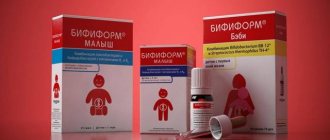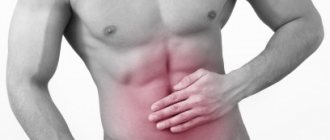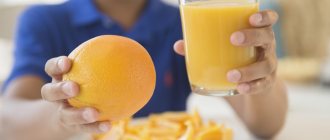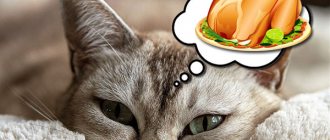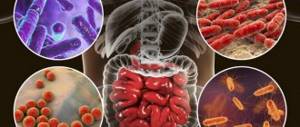Intestinal flu is a common and dangerous infection that often affects children of all ages. In order to quickly rid the baby of unpleasant symptoms, in addition to medications, diet is prescribed, since for rotavirus in children this is an important component of therapy. Despite the limitations, the diet can be made not only healthy, but also tasty and varied.
What is rotavirus infection
The name stomach flu is not a medical term. In fact, rotavirus is not related to the pathogens of ordinary flu. The disease is caused by rotaviruses.
Symptoms accompanying the infection usually develop at lightning speed and are acute:
- diarrhea;
- dehydration;
- intoxication;
- vomit;
- temperature rise;
- runny nose;
- stuffy and sore throat;
- lack of appetite;
- apathy, lack of strength.
After infection, the latent period ranges from 1 to 5 days. The acute period lasts for 3–7 days. Rotavirus is considered a childhood disease. Adults are less susceptible to this disease because their immune system blocks the virus from entering. When infected in adults, the symptoms are not so pronounced.
Often, a person with a mild intestinal disorder may not even realize that he is infected with rotavirus.
The infection is especially severe in children under 2 years of age. Possible stool up to 15-20 times a day and vomiting from 3 to 25 times a day. Such a blow to a fragile child’s body without following a diet and drinking regime is very dangerous for the child.
Without proper treatment and provision of necessary medical care to children, the process of dehydration can lead to dire consequences, including death. After an illness, children are characterized by lactose deficiency, when drinking milk provokes stool upset.
Who can get infected with the virus?
Rotavirus disease is an infection and is highly contagious. When caring for a patient, it is almost impossible to avoid infection. The risk of getting an infection increases thousands of times, even if a healthy person is close to a sick person. What can we say about close contact with him.
Rotavirus is transmitted by airborne droplets, so it spreads quite quickly, especially within groups of people: the same class, team, community or family circle. Individuals with reduced immunity and children under two years of age are at greater risk.
The airborne route is not the only available channel of infection. Patients often indicate that they could have contracted the infection through food, dirty hands and untested water. The main trick of this virus is its ability to survive at low temperatures. Therefore, all food and water must be treated with high levels. Doctors note that children suffer from this disease much more difficult than adults.
Why is proper nutrition important during illness?
With rotavirus, the intestinal epithelium is disrupted and its absorption properties are reduced. Therefore, the use of antibiotics is not recommended, as they will further weaken the intestines, suppressing beneficial flora. There are no special antiviral agents to combat rotavirus.
Treatment includes three main areas:
- Maintaining the body's water balance.
- Elimination of intoxication.
- Dieting.
It is necessary to adhere to proper nutrition during rotavirus so as not to provoke intestinal irritation even more. Young children are not allowed to introduce new foods into their diet or give milk. Failure to follow the diet and dehydration increases the risk of complications.
Malabsorption may occur, the loss of nutrients due to low absorption in the intestine, which will affect the functioning of all body systems. For example, low calcium absorption can provoke seizures in children. In severe cases, hospitalization and intravenous saline may be necessary.
General rules of treatment
The main danger with rotavirus disease is intoxication of the child’s body. Drug treatment is aimed at maintaining the body in a normal state.
It is the dietary nutrition system that is the main “healer”; none of the drugs is able to get rid of the infection completely.
When drawing up a therapeutic diet during illness and after, you need to understand why it is needed:
- Prevents even greater intoxication of the child’s body.
- Reduces the load on the inflamed digestive system.
- Helps relieve symptoms and get better.
Key points in nutrition during and after illness:
- Feed only approved foods, trying to chop them well, bake or boil them. Using a double boiler will come in handy more than ever.
- As practice shows, in the first days there is no appetite. It is worth holding off on the therapeutic diet, offering a light dish or drink (low-fat broth, rice porridge with water, jelly, herbal decoction). The diet should be started when the child shows interest in food; force feeding is not recommended.
- You need to stick to the fractional regime. Offering food or drink should be frequent (about 3 hours apart), but in small portions so as not to trigger the gag reflex again.
- It is necessary to drink a lot of fluids to restore the natural water-salt balance of the body after dehydration.
- After an illness, you should not immediately give the foods that the baby ate, making sure to maintain the principle of a therapeutic diet. But the list of permitted products can be significantly increased;
- It is worth consulting with a specialist (pediatrician) about your current symptoms to rule out the possibility of a more serious illness.
Diet rules for intestinal infection
A diet for rotavirus in children is necessary for a speedy recovery and restoration of intestinal flora.
A diet for rotavirus in children involves the complete exclusion of dairy products from the diet.
Following the rules will help alleviate the unpleasant manifestations of the infection and speed up recovery:
- The consumption of dairy products and derivatives of sour milk products is prohibited. You should also not eat raw vegetables and fruits, sweets and soda. The ban on dairy and derivative products is associated with a deterioration in their digestion due to a decrease in lactobacilli. Breastfed babies can continue to be fed breast milk, but it is not worth introducing new foods just yet. Artificial children are prescribed special lactose-free formulas and dairy-free cereals.
- Ensure frequent drinking. Dehydration should absolutely not be allowed. It is especially important to monitor infants who are not very fond of drinking plain water. They should be drunk little by little with a teaspoon. Among the medications, rehydron is prescribed, a special drug that compensates for the lack of water and microelements. Children do not always agree to drink it because of its specific taste. You can feed children in the acute phase with lightly sugared compotes, jelly, tea, chamomile or rose hips.
- Steam processing of products is preferable.
- You should reduce the usual amount of daily food by 20%.
- A child should not be forced to eat. This may trigger vomiting.
- Food should be offered in small portions.
- To clarify the diagnosis and prescribe a diet, you should definitely show the child to a pediatrician.
Features of nutrition during the recovery period
Since the affected intestinal mucosa takes a long time to heal, the diet after rotavirus continues, despite the disappearance of symptoms. This is especially important during the first 2-3 weeks. The menu can be enriched with familiar products, but gradually.
The principles of the diet after rotavirus are as follows:
- Eating food in small portions.
- Sweets allowed are marshmallows and vanilla marshmallows.
- Pasta can only be given when bowel movements are normal.
- Compliance with drinking regime.
- To compensate for the lack of microelements, as well as to restore the salt balance, the use of mineral water (for example, Borjomi) is prescribed.
- You can add other types of meat to the menu no earlier than a week and a half after recovery.
- Half a month after getting rid of rotavirus, you can introduce fermented milk products into your diet, but only fresh ones and with a minimum shelf life. Products that have a long shelf life will not help restore the balance of microflora, and even moreover, they will cause harm.
- After 2 weeks after recovery, the diet menu is enriched with vegetables and fruits, but not in raw form.
They return to their normal diet approximately 1 month after the illness (in consultation with the doctor). Until this time, you need to eat light, healthy and fortified foods.
Drinking regime
The diet for rotavirus includes maintaining vital water balance at the required level. Rotavirus is dangerous in children primarily due to dehydration. With repeated episodes of diarrhea and vomiting, the body loses a significant amount of fluid and minerals, and the water-electrolyte balance is disrupted.
Every 30-40 minutes you should drink 40-60 ml of plain clean water. This will protect against the severe effects of dehydration. You can drink compotes, jelly, brewed chamomile and rosehip decoction.
As an additional therapy, you can use rehydration drugs (hydrovit, humana, rehydron), which are diluted with water and help to quickly neutralize the infection, maintaining the water balance at the desired level.
Treatment of an adult usually does not cause difficulties. In case of indigestion, the body experiences thirst and an adult, as well as a teenager, is able to quench it independently. Preschool children and infants cannot fully understand and express their needs.
Even when they are thirsty, they become capricious and refuse to drink water. In such cases, children should be given water after each episode of vomiting. Throughout the day, offer 5-15 ml of water at intervals of 10-15 minutes. You shouldn’t force yourself to drink a lot in one go. You can provoke vomiting even more and worsen the situation.
The child does not eat anything after illness: what to do?
There are often cases when, after an illness, a baby refuses to eat, and parents begin to seriously worry about this - their strength is already lost, they need to restore it, but their appetite has disappeared.
Refusal to eat is a sign that the body has not yet fully recovered from the illness . Therefore, in such situations it is better not to insist and not to force feed. Such parental behavior can easily provoke a negative attitude towards meals or gag reflexes at the sight of food in the future.
After an illness, continue to give your baby more water - this will help the germs leave the child’s body faster. It is very important to monitor the baby all this time. If, when refusing food, the baby is cheerful, cheerful, and active, there is no need to worry . Soon your appetite will improve, but now it’s enough just to offer dishes, but not to insist.
Try giving a more filling drink rather than plain water . Suitable for this purpose:
- jelly,
- rice water,
- ryazhenka,
- slightly sweetened kefir.
Table of permitted products
The diet for rotavirus in children involves a certain set of foods.
| Type | What is possible |
| Bakery products | Sushi, croquette, crackers, toast |
| Beverages | Black tea, compotes, brewed herbs (rosehip, chamomile), rice broth |
| From meat | Chicken, rabbit, veal, turkey fillet |
| From fish | Hake, pollock |
| Vegetables | Potatoes, carrots, pumpkin |
| Fruits | Bananas, pears |
| Porridge | From buckwheat, rice, semolina |
| Other products | Boiled eggs, cottage cheese |
Maintaining water and electrolyte balance
When thinking through a diet, the most important thing is not to forget about drinking regularly. The baby needs to be supported with saline solution. This can be a pharmacy ready-made drug or a solution prepared at home. To do this, add two to four large spoons of sugar, one small spoon of salt and half a spoon of sodium bicarbonate to a liter of boiling water. Boiling water can be replaced with raisin decoction.
Offer your baby to drink fifty milliliters of a cooled drink every couple of hours. As you recover, maintain your drinking regimen with tea, rosehip infusion, rice water, clean water, and chicken broth. Young patients will also enjoy teas with the addition of chamomile flowers and mint leaves. Before doing this, make sure that your child is not allergic to these plants.
List of prohibited products
Products whose consumption will have to be limited:
- Fresh baked goods, rolls.
- Meat with a high proportion of fat.
- Fatty fish - mackerel, salmon, tuna.
- Meaty broths and soups.
- Sausages, canned food, smoked products.
- Coarse cereals (millet, egg, pearl barley).
- Dairy food.
- Products made from sour milk.
- Yellow cheeses.
- White cabbage, radish, cucumber, onion, garlic.
- Beans.
- Oranges, apricots, lemons, plums, grapes
- Sweets.
- Coffee, soda.
The listed products are difficult to digest, especially in the active phase of the disease. It is not recommended to overload the digestive tract with difficult-to-digest foods, so for a speedy recovery, it is better to hold off on consuming these types of foods.
Dietary main courses
Meat pudding
Ingredients:
200 g boiled or stewed meat (various types), 1 egg, 1 bun, 30 g low-fat milk, salt, parsley, butter and breadcrumbs.
Preparation:
Grind the boiled (stewed) meat. Then grind the yolk with salt, add it to the meat, soak the bun in milk and grind thoroughly. Add salt and lightly beat the egg white. Grease the mold with butter and sprinkle with breadcrumbs, fill 4/5 with the meat mixture. Cover with aluminum foil and cook for about 15 minutes in a water bath. Cut the finished pudding into portions and serve.
Risotto with meat and cheese
Ingredients:
80 g lean meat (poultry, veal, rabbit), 10 g butter, 120 g rice, 10 g carrots, 40 g low fat Edam cheese, salt.
Preparation:
Cut the washed lean meat into small pieces and fry without oil. Pour hot water, add salt, add oil and cook over low heat. When the meat becomes slightly soft, add boiled rice, peeled and thinly sliced carrots (or grated on a coarse grater), add hot water, add salt and simmer until tender. Before serving, sprinkle each serving with grated cheese.
Features of the diet for breastfed children
The diet for rotavirus in children receiving breast milk has its own nuances. The baby receives immunoglobulins with milk, which promote a speedy recovery, so there is no need to stop feeding. Some infants are given very little water and are reluctant to drink it. If you have rotavirus, you will have to teach your child to drink plain, clean water.
It should be soldered in small portions of 5-10 ml, every 15-20 minutes.
If the child has already been introduced to complementary foods, then there is no need to add new products yet. It will be possible to continue introducing new things after complete recovery and recovery. As a rule, a child who has been introduced to complementary foods for more than six months can be offered to drink chamomile or compote, in the absence of undesirable reactions to the berries.
This rule should be followed to prevent dehydration in a small person. The amount of fluid supplied should be approximately equal to its losses. After vomiting or diarrhea occurs, the child should be given at least 50 ml of liquid to drink.
Water should be given, not formula or breast milk. If the baby refuses to drink from a bottle or sippy cup, then it is necessary to drink it with a spoon. You should not overfeed with breast milk; it is better to try to reduce the portion size.
For children aged from six months to 2-2.5 years (many are now breastfeeding until this age), general dietary restrictions apply. You should limit sweet, fatty, dairy and bloating-causing foods.
About the importance of diet
To quickly eliminate unpleasant symptoms, stick to a soft, gentle diet. The use of dietary products is aimed at replenishing water balance and restoring the functions of the digestive system. A special diet is followed even after the end of the acute phase of the pathology. Eating heavy food immediately after the baby has recovered leads to the re-development of the disease.
If your child has a good appetite, you should still temporarily limit his diet. It is necessary to reduce portions of dishes, but increase the frequency of their consumption. Food and drink should be at room temperature. You need to give your child homemade decoctions to restore water balance every 30 minutes, 0.5 cups.
Breastfed babies are fed according to the established schedule. Mother's milk contains microelements and vitamins necessary for the baby's speedy recovery. To prevent vomiting, during exacerbation of the disease, it is recommended to switch to dosed nutrition. It is necessary to reduce the amount of milk, but increase the frequency of feedings.
In case of complications of rotavirus infection or the development of lactase deficiency in the baby, pumping is indicated. Drugs that break down lactose are added to milk. They return to a standard diet after stool normalization. Regardless of the severity of the pathology, complementary foods should not be introduced during the active phase of rotavirus.
Breastfed children should not introduce complementary foods during periods of inflammation in the intestines.
Milk is temporarily excluded from the diet of bottle-fed children. During this period, it should include porridge with water, special mixtures with lactobacilli. In case of complications, babies are given anti-reflux compounds to prevent vomiting. Infants are fed up to 8 times a day in portions of 50-60 ml.
Therapeutic nutrition for children over one year of age is aimed at relieving inflammation and replenishing water balance. During an exacerbation, the baby is fed only freshly prepared light food. The diet should include porridge with water, mashed potatoes and carrots, baked fruits, especially pears. During the rehabilitation period, the child should eat yoghurt to restore intestinal microflora.
The main feature of the diet is the restoration of the functioning of the intestines and organs of the gastrointestinal tract, since an imbalance occurs with rotavirus. The products and dishes on the menu list should be healthy and low-calorie, then the diet will really help restore intestinal function.
A properly selected diet has the following features:
- Helps get rid of dehydration and lack of fluid, which prevents nutrients from being absorbed and causes hormonal imbalance.
- Helps get rid of the unpleasant symptoms of nausea, vomiting and weakness, which often occurs due to hunger and lack of appetite during rotavirus infection.
- Stimulates the functioning of the gastrointestinal tract and helps improve immunity, which helps fight rotavirus infection more quickly.
The diet must be followed until the unpleasant symptoms and infection in general disappear. You need to regularly visit a gastroenterologist and nutritionist, who will conduct an examination and determine whether the disease is going away and what diet will be appropriate.
Experts recommend following a diet like this:
- Eliminate harmful fatty foods and drinks from your diet until intestinal function is restored and unpleasant symptoms disappear, since diarrhea can be a problem even after illness.
- Follow a diet and avoid fatty and fried foods until the body is dehydrated (include foods with a high fluid content in your diet).
- Do not eat sweet or sour foods until the unpleasant symptoms, nausea and vomiting, which indicate that the disease is not completely cured, disappear.
- Eat and diet until you can prevent anorexia and return to normal weight, which is lost during the disease.
Diet for rotavirus is of great importance and affects intestinal function in adults and children, so it is worth carefully reviewing the diet and treating the disease.
Article design: Mila Friedan
The diet after rotavirus in a child should be based on the following principles:
- In the first hours after an attack of vomiting and diarrhea, the child may lose appetite. There is no need to force feed him. It is important to regularly give your child warm, weak tea, dried fruit compote or plain water.
- Starting from the second day after rotavirus, they begin to give food. Portions should be small, divided into 5-6 doses throughout the day. Large amounts of food can trigger new bouts of vomiting.
- Dishes for a child with rotavirus should be warm (about room temperature). Food that is too hot or cold will cause additional irritation to the inflamed digestive tract.
If the child is at home, provide him with separate dishes - plate, cup, cutlery. This measure will help prevent rotavirus infection of the rest of the household.
If an infant under one year of age is bottle-fed, the following rules must be followed:
- use mixtures and cereals that do not contain lactose;
- feed the baby often, but in small portions.
The introduction of new complementary foods should be stopped for the next month. In the future, the transition should be gradual. If the child already eats meat and dairy products, their amount in the diet must be reduced.
The nutritional characteristics of children with rotavirus infection vary depending on the age of the child. The nutritional needs of an infant and preschooler differ from the menu of a schoolchild. It is important to consider several basic aspects of nutrition by age.
In infants
The diet for rotavirus in infants up to 5-6 months remains unchanged. The main food is breast milk. Along with mother's milk, the baby's body receives numerous useful components, immunoglobulins, which contribute to a speedy recovery. The only caveat is the exclusion of introducing complementary foods during a rotavirus infection, and if the introduction of a new product coincides with the infection, complementary feeding is stopped for a while.
Infants are advised to drink plenty of fluids, at least 10 ml every 30 minutes; you can give clean water less, but even more often. Dehydration develops much faster in babies, so it is important to replace the amount of fluid lost through vomiting and diarrhea. After vomiting or diarrhea, a single volume of fluid should be approximately equal to the loss, at least 50 ml.
In fact, the body itself is capable of overcoming the unfortunate disease. However, for this he needs the support and help of his owner. Thus, by following a rotavirus diet, the patient creates guarantees for a speedy recovery. This does not negate the importance of consulting your doctor; visiting him at the first symptoms is extremely necessary.
The main task of the diet is to ensure that the body is sufficiently saturated with fluid. Since the patient suffers from vomiting and diarrhea during the course of the illness, water will help restore internal balance and minimize the possibility of further complications. Diet is a significant percentage of the importance for recovery and restoration of human health.
You should switch from your usual diet to a dietary diet as soon as the first symptoms appear. It is important to free the body from additional work in order to actively fight the virus. In the first days, the body, weakened by the disease, does not want to eat at all, and it is not recommended to force the patient to eat normally. As complementary food, you can give chicken broth made from skinless chicken breast.
The most important thing is to drink enough fluid. At the same time, the list of permitted drinks includes only light decoctions of chamomile and raisins and water, and store-bought sodas and sweet juices should remain far away. Due to the high content of pectin, permitted drinks will not only restore fluid balance, but will also remove toxins that poison the health of an already sick person.
Any diet involves some dietary restrictions. For a therapeutic diet aimed at restoring health after fighting rotavirus, there are quite strict boundaries. Since the virus has an effect on the entire body, including impairing the functioning of the digestive system, you should adhere to all recommended nutritional rules. During treatment it is necessary to avoid:
- fatty foods (this includes both meat and vegetables fried in oil);
- milk (all dairy and fermented milk products, including cheese, sour cream), they are prohibited because they can irritate the gastrointestinal tract, increasing the symptoms of the disease;
- bread and pasta of any kind;
- sweets, pastries, desserts in any form;
- smoked products, sausages and sausages;
- canned food, both factory-made and home-made;
- millet, pearl barley and barley, they are too heavy for weakened digestion;
- onions, garlic, hot peppers, radishes, cabbage - they are all somewhat spicy and can only harm the stomach and intestines, increasing painful symptoms;
- coffee, black strong tea;
- semi-finished products and all kinds of fast food (minute porridge also refers to prohibited food for the duration of treatment).
All these foods cannot be eaten. Everything that is not prohibited can be consumed, but there are some conditions. During the first days, they should not be included in the diet of someone who has contracted the infection. This could be dangerous to his health. He should be fed porridge - rice and semolina. They carefully envelop the walls of the stomach without causing irritation or increased painful symptoms.
After these days, corn porridge and oatmeal, still with water, are introduced into the diet. You can additionally add jelly as a drink. This drink also has a beneficial effect on health, supporting the normal functioning of the digestive system.
Dietary food for rotavirus infection contains regular foods and is not financially expensive. The cost of a set of products for a week varies between 1400-1500 rubles.
Diet for children 2-3 years old
The diet for rotavirus in children aged 2-3 years is aimed at compensating for lack of fluid and eliminating intestinal irritation. Typically, a child of this age is familiar with most foods. General dietary restrictions for rotavirus should be followed.
The most important thing is to adhere to the drinking regime. The child should drink about 50 ml of water twice an hour. In addition to water, at this age you can offer berry fruit drinks, brewed rosehip or chamomile, and pharmaceutical solutions (Rehydron, Hunama).
The serving size should be smaller than usual. Letting people try new, especially exotic, fruits and vegetables is prohibited. Porridge is cooked in water, milk is excluded. For snacks, you can bake apples or pears, give dry croquette cookies, crackers and crackers.
After the active phase of the infection has subsided, stools are normal and vomiting has stopped, they begin to include yoghurt in the diet to restore beneficial intestinal flora. Before prescribing a diet, consultation and examination by a pediatrician to clarify the diagnosis are required.
Causes
Any healthy child can catch rotavirus; it is transmitted by airborne droplets from person to person. This may be a single case of infection or a seasonal epidemic that occurs in the colder months of the year (often spring-autumn). This is especially true for preschool and educational institutions: kindergartens, schools, training groups, clubs.
The cause of the disease can be:
- Spoiled products (most often dairy).
- Tap water containing E. coli.
- Not washed hands.
- Children's toys, things after a baby recovered from rotavirus.
- Direct contact with a virus carrier that could cause infection.
Diet for children 4-6 years old
Children 4-6 years old experience illness more consciously, because they can not only cry, but also talk about how they are feeling and explain what is bothering them. Recommendations on prohibited and permitted products remain general. This is a ban on dairy products, fatty foods, and sweets.
A child of this age is more aware of the need to drink plenty of fluids. You can offer him to drink rice water or raisin water with salt. 80-120 ml of liquid should be offered every hour. If necessary, give in smaller portions. To diversify the menu, you can offer an egg omelet or non-sour cottage cheese.
The diet for rotavirus in children 4-6 years old is not fundamentally different from the diet for illness in young children. If infected, you should follow the drinking regime and avoid foods that are not recommended during the period of illness.
How many times a day should you eat?
Failure to adhere to the diet can cause further intestinal distress, including malabsorption syndrome, irritable bowel syndrome, bacterial infection, weakened immune system, and seizures. The lining of the intestines is weakened, irritated, and the lack of adequate nutrition leads to even greater damage to the lining epithelium.
Rules cannot only apply to food choices. It is also worth adjusting the number of meals during the day. Of course, with bed rest and plenty of sleep, nutrition regulation is not so easy. However, the person caring for the patient should still ensure that the patient eats 4-6 times a day.
This condition is also mandatory, since in such a difficult period it is especially important for the body to receive nutrition in a timely manner, otherwise it simply will not have the strength to cope with a strong virus. Overeating is as unacceptable as hunger: pauses between meals should be at least an hour long. Portions can be small or medium, depending on the patient’s well-being.
Weekly menu for sick children
The approximate menu for a week for rotavirus looks like this (breakfast, second breakfast, lunch, afternoon snack, dinner).
Mon:
- dairy-free buckwheat porridge;
- jelly;
- vegetable soup, bread;
- baked apple;
- mashed potatoes, steamed turkey meatballs.
Tue:
- egg omelet;
- compote of berries or dried fruits;
- rice and steamed pollock fillet;
- dried bread with jam;
- boiled carrot salad, baked chicken fillet without spices.
Wed:
- semolina porridge without milk;
- boiled egg;
- beef meatball soup;
- berry juice, croquette cookies;
- fish soup from hake fillet.
Thu:
- carrot puree;
- jelly;
- cauliflower soup with rabbit meatballs;
- boiled egg;
- banana puree.
Fri:
- rice porridge;
- boiled egg;
- pureed cream vegetable soup with breadcrumbs;
- compote;
- stewed chicken with vegetables.
Sat:
- buckwheat steamed with boiling water;
- toast with jam;
- chicken soup;
- rosehip decoction with cookies;
- carp baked with carrots.
Sun:
- boiled egg, jelly;
- banana;
- pilaf with chicken without seasoning;
- baked apple;
- semolina porridge with fruit.
A varied and balanced menu of acceptable foods will not overload the stomach and will contribute to a speedy recovery from the acute period of the disease.
Some recipes
Even during a diet, you can eat not only healthy, but also delicious food. The main thing is that the food you eat is not fried, hot, spicy or fatty. Only with proper nutrition can the manifestations of rotavirus be reduced and the child’s condition improved.
Vegetable stew
Tomatoes (3 pieces), 1 zucchini, 2 carrots, 1 eggplant, cut into cubes. The tomatoes are first peeled. The ingredients are simmered until soft under the lid, adding water if necessary.
Stuffed peppers
Take 4 seeded sweet peppers, 1 carrot, zucchini and eggplant. All vegetables, except the main ingredient, are chopped and mixed. Then the resulting mixture is filled with peppers and cooked in a double boiler for half an hour.
Baked vegetables with chicken breast
The fillet is cut crosswise, then poured with mineral water and left for 30 minutes. Cut 2 tomatoes and 2 carrots into long strips. Place the softened breast with vegetables on foil and bake in the oven for half an hour at 180 ℃.
Apple-carrot puree
Carrots (3 pieces) are boiled until tender, 2 apples are peeled and seeded, and then baked in the oven. The ingredients are crushed to a puree consistency and mixed with 1 tsp. honey and cinnamon.
Recipes for rotavirus in children
Dishes offered for rotavirus should be simple, without spices and unnecessary culinary intricacies. You should not feed your child fried, spicy or fatty foods. The preferred method of processing when cooking is boiling, stewing and dipping without crust.
The most important thing is to maintain water and drinking balance.
Drinking water can be alternated with other drinks:
- Water-salt drink with raisins: liter of water, 1/3 cup of raisins, 1/3 tsp. soda, 1 tsp. salt, 3 tsp. Sahara. Throw raisins into boiling water and boil for 15-20 minutes. Strain and add salt, soda and sugar.
- Rice broth: 0.5 cups rice, 2 cups water. Add rice to boiling water. Cook until done. Do not strain, but rub the water with rice until it becomes jelly-like.
- Blueberry compote – 0.5-1 cup fresh, dried or frozen blueberries, 1-1.5 liters of water, sugar to taste. Throw the berries into boiling water and cook for 15 minutes. until ready.
The basis of the diet should be porridge, light soups with meatballs, baked or boiled meat:
- Dairy-free porridge - 100 g of cereal (buckwheat, semolina or rice), 600 ml of water, sugar to taste. Boil water, add cereal. Cook while stirring until done.
- Vegetable soup with meatballs – 2 liters of water, 5-6 potatoes, 1 large carrot, 4 tbsp. l. medium-sized pasta, 300 g minced meat (chicken, turkey or rabbit). Add chopped potatoes and carrots to boiling water. Mince the meat and form into small meatballs. Then throw in the meatballs and pasta. Salt to taste.
- Baked turkey - turkey fillet, salt. Salt the meat a little and bake in a sleeve or foil.
- Chicken pilaf – a glass of rice, 3-4 glasses of water, 2 chicken fillets, carrots, salt. Chop the fillet and carrots into small pieces and simmer. Add a glass of rice and fill everything with water. Simmer over low heat until fully cooked.
In case of rotavirus, chocolate, sweets and confectionery products with fatty creams are prohibited.
You can pamper your child with healthier sweets:
- Apples, baked - 5-6 apples, powdered sugar. Carefully peel the apples from the cores, place them in a mold and bake until tender for 15-20 minutes in a preheated oven. Sprinkle the finished apples with powdered sugar. For cooking, you can use a slow cooker or microwave.
- Cottage cheese casserole with banana – 500 g cottage cheese, 2 bananas, 2 eggs, 100 g sugar, a pinch of salt and soda, 4 tbsp. semolina. Grind eggs with cottage cheese and bananas. Add sugar, salt, soda. Add semolina. Bake in the oven or slow cooker until done, 30-40 minutes.
Recommended drinks
To prevent dehydration due to rotavirus, it is recommended to drink more fluids. In addition to ordinary water, it is necessary to enrich the child’s diet with raspberry, currant and blueberry decoction, cocoa (without milk), jelly, tea, and water-salt solutions. There are many recipes for drinks and they are easy to prepare.
Congee
Pre-soaked cereal in the amount of 2 tbsp. l. boil until completely softened. Then add some salt and rub until it reaches a jelly-like consistency. This remedy will help eliminate the painful symptoms of rotavirus and improve the child’s well-being. It is recommended to take 50 ml of the drink 1-2 times a day.
Raisin decoction
Washed raisins (⅓ cup) are boiled in a liter of water for an hour. Then the liquid is filtered and mixed with 30 g of sugar, 1 tsp. salt and 0.5 tsp. soda Then the composition is brought to a boil. If you have rotavirus, drink 100 ml of the drink once a day.
Blueberry compote
Dried fruits (40 g) are boiled in a liter of water until softened, filtered, and then the berries are ground. For rotavirus, drink ½ cup of a sweetened drink once a day.
Nutrition after rotavirus
Rotavirus disrupts the production of important intestinal enzymes responsible for the breakdown of lactose. Therefore, after the acute period has subsided, you should not consume dairy products for 3-4 weeks. Sometimes in young children this period can be much longer and require additional treatment with special medications.
The therapeutic diet for rotavirus is quite strict, and you should exit it gradually after the symptoms of the infection have subsided. During the first few weeks, it is better to stick to proper nutrition. Products that are not recommended during illness are gradually returned to the diet. Children under one year of age are not given complementary foods until the body is fully restored.
With a stable cessation of vomiting and diarrhea, children can be given kefir and yoghurt to restore beneficial flora. Prevention of the disease includes observing the principles of basic hygiene and monitoring the expiration dates and freshness of products.
Rotavirus infection affects more than 100 million people per year.
About 20% of cases are subject to hospitalization due to the severe course of the disease. An inflamed intestine worsens the general condition of the human body, reducing the absorption of nutrients and disrupting metabolism. The main and most effective method of treatment in children and adults is following a therapeutic diet and maintaining water balance at a vital level.
The danger of infection for children's health
Rotavirus infection in children may develop serious complications. First of all, this:
- dehydration due to diarrhea and vomiting;
- at high temperatures, babies may experience seizures;
- due to infection, there is a threat of metabolic disorders - acetone acid accumulates in the blood, causing intoxication;
- In children, the nervous system may be affected, and then the main symptoms are accompanied by delirium and fainting.
If help is not provided to the child in a timely manner, this situation can lead to death.
Basic principles of diet planning
To ensure your diet is beneficial, remember the following principles:
- A lot of liquid is consumed: water, herbal teas, berry decoctions, compotes.
Porridge, vegetable soups and purees are healthy.
Meat is not prohibited, but you should choose only low-fat varieties: chicken, beef, turkey, veal. After cooking, the meat is mashed so that it is better absorbed.
Vegetable oil and butter are prohibited. These foods will make your diarrhea worse.
Eggs can be consumed boiled or as an omelet. You should not eat more than two eggs per week.
Food must be steamed, boiled or baked. Frying is prohibited: it aggravates the patient’s condition and negatively affects digestion.
Daily calorie content during the diet is 2200-2500 kcal, weight is 2.4-2.7 kg. Eat 5-6 times a day, the break should not exceed three hours.
You cannot go hungry during this period: this will weaken the body even more. If there is no appetite, you need to give the patient vegetable broth or vegetable puree. Hunger strikes are unacceptable.
Treatment table
For the first 2-4 days, the patient suffers from severe vomiting or diarrhea. This period is called the acute phase. In order not to provoke symptoms, food these days is limited as much as possible, taken in small portions 5-6 times a day.
In the acute phase, you can cook porridge in water for the patient. It is better to take rice or semolina. They attach and envelop well. In addition, they do not cause fermentation processes in the intestines. Porridge should be eaten in liquid form, without salt, sugar or oil.
Vegetable oil stimulates peristalsis. It can worsen diarrhea. Butter is poorly digested due to enzyme deficiency caused by viruses.
Rice-semolina porridge can be given for 1-2 days. If your condition improves, you can try buckwheat, corn and oatmeal.
After porridge, meat is introduced into the diet. It should be lean boiled or steamed fillet. The best options are rabbit, turkey, veal and chicken breast. To facilitate accessibility, it is better to consume meat products in chopped form (cutlets, meatballs, meatballs). It is allowed to eat low-fat fish (hake, talisman).
After introducing meat, you can add eggs to the diet of the diseased person. It is better to cook them in the form of steam omelettes or simply hard-boil them. Due to the high cholesterol content, it is better to limit the number of eggs to 1-2 per week.
Vegetables and fruits are introduced only in boiled and baked form. Water-based mashed potatoes, zucchini and carrots are allowed. You can also expand your diet with broccoli and cauliflower.
In the first days, you need to drink pure water and electrolyte solutions (Orolit, Regidron, Gastrolit). After the condition improves, brew herbal decoctions (blueberries, raspberries, rose hips) for the patient. It is useful to cook dried fruit compote (without prunes). It is also allowed to drink weak tea and jelly.
Be sure to drink kefir and other fermented milk products (yogurt, acidophylline) from the 4th day of illness. They normalize acidity in the intestines, preventing the development of pathogenic bacterial flora.
This is a complete therapeutic diet for rotavirus infection, which must be followed during the illness and 2 weeks after it. During this time, the intestinal mucosa will recover and you will be able to return to your normal menu.
Baby menu for breastfeeding
Breast milk contains immunoglobulins against pathogens, biologically active substances that promote the regeneration of the intestinal epithelium. All this will help to cope with the virus faster. Encourage your baby to suckle frequently, but in small doses. If hypolactasia occurs, lactase enzyme must be added to the milk. When your baby's diarrhea stops, you can continue breastfeeding as before.
Some experts advise interrupting breastfeeding for a couple of weeks and giving the baby lactose-free, soy-based formulas at the height of the illness.
What to feed a small patient
If, with diarrhea, the child does not want to eat at all, which most often occurs in the first 12 hours of the disease, you should limit yourself to only water and sorbents. When your baby develops an appetite, you should be ready to offer him some healthy food. You can feed a child with diarrhea with products that have undergone not only thermal, but also mechanical processing
. An irritated gastrointestinal tract does not have the ability to digest large pieces of food. Therefore, any food should be served in ground, crushed to a paste form.
Water is excreted too quickly through the kidney. Slightly sugary drinks are better absorbed by the body and cells. Diarrhea usually heals on its own within a few days. If diarrhea continues for more than two to three days, you should consult a doctor. Drunkenness should be distributed throughout the day in small quantities.
Optimal food during diarrhea. Ripe bananas are rich in potassium, an electrolyte that is very important in diarrheal diseases. In addition, bananas have a calming effect and provide energy to the body. White rice is an optimal food for diarrhea because it soothes the throat, is easily digestible and provides energy to the body. Also, salty vegetable broth, vegetable or grain soup without fat supply the body with electrolytes and water. Probiotic yogurt: Restoring intestinal flora can be achieved by ingesting darmbacteria such as lactobacilli and bifidobacteria in probiotic yogurt. Because of their high pectin content, grated apples are an optimal food for diarrhea, but they are not well tolerated by everyone. Kid friendly: apple or banana, carrot or rice bran soup! Basically, you can say that most carbohydrates are especially suitable for diarrhea. They can be found in rice, noodles, potatoes, white bread or salted rice waffles. You must avoid this! Foods that are fatty, spicy, dairy, or protein-rich foods should be avoided and usually taste bad. Lactose intolerance in children isn't great, but it's not a sunset.
So, what can you feed your child when he has diarrhea:
- If the child does not refuse food, the best dish will be porridge, which has a characteristic slimy consistency. They will envelop the gastrointestinal mucosa, relieving irritation in the lower intestines. Depending on taste preferences, you can give rice or oatmeal cooked in water. To improve the taste, you can add a little honey or sugar. A few days after diarrhea, you can start cooking porridge with half-and-half milk (with water in a 1:1 ratio).
- The category of permitted dishes also includes steamed omelettes and lean soups with vegetable broth. Liquid and light food will help you gain strength and improve the functioning of your digestive system.
- Beef, rabbit, chicken fillet and other low-fat varieties are acceptable. Meat dishes must be prepared by steaming or boiling without adding fat,
followed by grinding until smooth.
Canned baby food and purees can be a real lifesaver in this situation. This is a dietary product that does not contain any flavoring additives, has a delicate consistency and is absolutely safe for children of any age.
If your child is lactose intolerant or has cow's milk protein, the food can be replaced with dairy alternatives. Whether it's delicious cocoa, refreshing yogurt, sweet chocolate or rich cheese, when kids complain of stomach pain and diarrhea after eating dairy, they may not be able to tolerate milk sugar or milk protein. He is then told that he is avoiding certain foods and looking for alternatives.
Milk allergy or lactose intolerance?
The concept of cow's milk compatibility is covered by two diseases: lactose intolerance and cow's milk allergy. Patients with lactose intolerance lack the enzymatic lactase, which in the small intestinal mucosa breaks down milk sugar into its building blocks for absorption into the blood. Undigested milk sugar reaches the colon, where it causes stomach pain, flatulence, or diarrhea. In cow's milk protein allergy, the immune system forms antibodies against foreign proteins from cow's milk.
Basic principles of nutrition for diarrhea
There are a huge number of causes, as well as treatment methods, for diarrhea. But the main principle of dietary nutrition in all these cases is easily digestible food with a maximum concentration of vitamins and microelements. This golden rule applies regardless of the baby’s age and the disease that caused the digestive disorder.
Poor absorption of nutrients in the gastrointestinal tract and dehydration are serious problems in acute diarrhea, which is defined as diarrhea lasting less than 14 days. When diarrhea exceeds 14 days, it is considered chronic diarrhea, and malabsorption of nutrients can become severe. Diarrhea can also cause death by depleting hydration and disrupting electrolyte status. Intermittent diarrhea can lead to malnutrition, which makes the child's immune system unable to cope with diseases such as respiratory infections and measles, leading to increased morbidity and mortality.
When preparing a diet for a sick child, it is necessary to take into account the importance of protein foods. Natural animal protein, found in eggs, meat and fish, will help restore strength and support the liver, which is suffering from the toxic effects of infection. As for milk protein, you should be careful and gradually introduce fermented milk products with a low fat content into your diet. Kefir or natural yogurt will help restore intestinal microflora, reducing the likelihood of further episodes of diarrhea.
Childhood diarrhea and malnutrition
Childhood diarrhea plays a significant role in malnutrition.
Infections in the intestines can lead to loss of essential nutrients, damage to the intestinal lining and impaired absorption of nutrients, which can then cause more severe malnutrition. Proper nutrition is essential to break the vicious cycle of malnutrition and diarrhea. Well-nourished children are more resistant to diarrheal illness. Bearing in mind that it may be beneficial to avoid raw fruits, milk and fatty foods, it is important to continue to offer a balanced diet. For children under six months of age, increased breastfeeding during illness is strongly recommended as it provides adequate nutrition and acts as an oral rehydration solution.
If a child has an upset stomach, you should not give pure cow's milk to drink. This product can worsen diarrhea, which will worsen the baby's condition.
Next on the list are carbohydrates. This component should be included in the child’s diet in minimal quantities. In this case, the main share should be cereals and vegetables that have undergone heat treatment. Fresh vegetables and fruits can enhance fermentation processes in the intestines. So it is better to leave this item of fortified food for the recovery period, when you can get rid of diarrhea and other symptoms of poisoning.
Communities should be consulted to understand common feeding and breastfeeding practices for children with diarrhea. Primary prevention of diarrhea involves controlling fecal-oral transmission of pathogens through sanitation and water hygiene. Effective interventions include rotavirus vaccination, breastfeeding and oral rehydration therapy, and community education on safe water, sanitation, and hygiene practices.
The World Health Organization and the United Nations Children's Fund recommend incorporating household water purification practices, proper fecal disposal, and promoting handwashing with soap and water to prevent diarrhea.
As for fats, their consumption during the acute period of diarrhea must be reduced. Diarrhea leads to dehydration and decreased appetite. As a result, the production of enzymes responsible for the digestion of fatty acids is disrupted.
If there is a digestive disorder, the child’s meals should be frequent and small.
. It is recommended to give food every 2 hours, but in small portions. Compensate for lack of food with liquid. To replenish lost fluid, a child with diarrhea needs to drink a lot, using regular purified water or rehydration pharmaceuticals.
Diet for young children
With safe drinking water, adequate sanitation, improved hygiene and routine vaccines, diarrhea is a preventable disease.
Low osmolarity, glucose-based oral rehydration solutions are recommended for the prevention or treatment of diarrhea. Low osmolarity solutions reduce the need for intravenous fluids and reduce stool output in children compared to standard formula. Oral rehydration salts are commonly available over the counter at local pharmacies and general supply stores in many Central American communities. They must be added to water that is potable, either bottled or from a source treated with chlorine, ultraviolet light, boiling, or microfiltration.
If a child refuses to eat, there is no need to force feed him. This can provoke vomiting, which will only worsen the baby’s condition.




